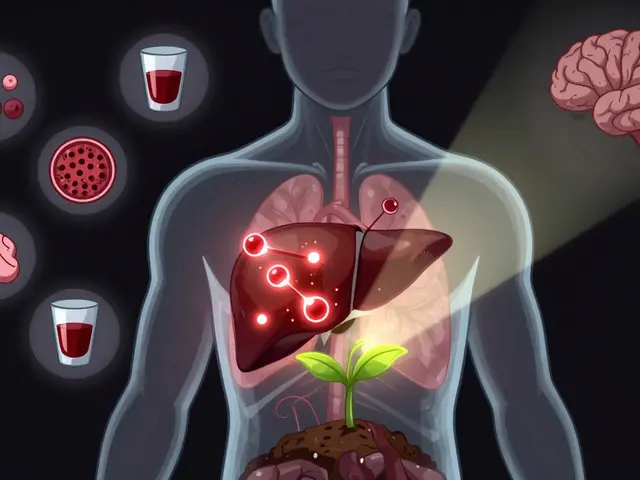
Understanding Novel Influenza
Influenza, more commonly known as the flu, is a highly contagious viral infection that primarily attacks the respiratory system - the nose, throat, and lungs. Novel influenza refers to strains of the virus that have not previously been seen in humans. They are often a result of a new subtype or strain that has made the jump from animals to humans. Being relatively new, they can be particularly dangerous as humans have no existing immunity to these strains. Novel influenza strains have been responsible for past pandemics, such as the H1N1 virus in 2009.
The Current Antiviral Treatments for Influenza
Antivirals are a type of medication used to treat viral infections. In the case of the influenza virus, antiviral drugs work by preventing the virus from multiplying, thereby reducing the severity and duration of the symptoms. Currently, there are four FDA-approved antiviral drugs recommended by the CDC to treat influenza: Oseltamivir, Zanamivir, Peramivir, and Baloxavir. These drugs can be particularly effective if taken within the first 48 hours of the onset of symptoms.
The Effectiveness of Current Antiviral Treatments
While these antivirals can be effective at treating the symptoms of influenza, they are not a cure. They can reduce the duration of the flu by 1 to 2 days and help prevent serious complications such as pneumonia. However, they are not 100% effective and do not prevent the spread of the virus. Furthermore, the virus can become resistant to these drugs, reducing their effectiveness. Therefore, while they are an important tool in the fight against the flu, they are not a definitive solution.
The Importance of Vaccination
Vaccination remains the most effective way to prevent influenza infection. The flu vaccine triggers an immune response that helps your body fight off the virus. The challenge with vaccination, especially in the case of novel influenza, is that the vaccine needs to match the circulating strains of the virus. Scientists predict which strains will be most common each season and develop vaccines accordingly. However, this process is not always accurate, which may lead to a mismatch between the vaccine and the circulating virus.
Promising Developments in Antiviral Treatments
Despite these challenges, there are promising developments in the field of antiviral treatments for influenza. Scientists are constantly researching and developing new drugs that can be more effective and have fewer side effects. For example, new drugs are being developed that target different parts of the virus, potentially making them more effective at stopping the virus from multiplying. Additionally, new methods of delivery, such as inhalable antivirals, are also being explored.
Future Trends in Influenza Treatment
One of the most exciting trends in influenza treatment is the move towards personalized medicine. This involves tailoring treatment to the individual patient based on their genetic makeup. This could potentially improve the effectiveness of treatment and reduce side effects. In addition, there is ongoing research into developing a universal flu vaccine. This vaccine would provide protection against all strains of the virus, eliminating the need for annual vaccinations.
Conclusion: The Fight Against Novel Influenza
The fight against novel influenza is a constant battle. While current antiviral treatments and vaccines provide some level of protection, they are not foolproof. However, with ongoing research and development, there is hope for more effective treatments in the future. As we continue to face new strains of the virus, it is crucial to remain vigilant and continue investing in research and development in this field.






17 Comments
The current antivirals are useful, yet their efficacy wanes as resistance emerges, highlighting a critical gap in our pandemic preparedness.
Great overview! It’s reassuring to see both the successes and the ongoing research laid out clearly.
While the existing drugs like oseltamivir and baloxavir have saved countless lives, their mechanism of action targets only a narrow set of viral proteins, meaning mutations can render them obsolete. The scientific community is therefore pivoting toward broad-spectrum agents that interfere with host‑cell pathways essential for viral replication. This shift promises to reduce the chance that a single point mutation will confer resistance. Moreover, the development of inhalable formulations could deliver higher concentrations of drug directly to the respiratory epithelium, where the virus initially establishes infection. Another exciting avenue is the use of monoclonic antibodies engineered to bind conserved epitopes across influenza subtypes. These biologics could act both prophylactically and therapeutically, offering a dual layer of protection. Researchers are also exploring CRISPR‑based antivirals that can cut viral RNA inside infected cells, a strategy that, if perfected, could be a game‑changer. However, the regulatory pathway for such novel modalities remains unclear, potentially delaying market entry. Funding agencies are beginning to recognize these hurdles and are allocating dedicated grants for translational work. In parallel, the push for a universal flu vaccine continues, with candidates targeting the stalk region of hemagglutinin, which mutates less frequently than the head. If successful, a universal vaccine would dramatically reduce the reliance on antivirals. Public health policy must also adapt, incorporating real‑time genomic surveillance to guide antiviral choice. The integration of AI-driven predictive models could forecast resistance patterns before they become widespread. Education of clinicians on the optimal timing of antiviral administration remains a cornerstone, as early treatment yields the greatest benefit. Ultimately, a multifaceted approach-combining improved drugs, innovative delivery systems, and robust surveillance-will be required to stay ahead of novel influenza strains. The roadmap outlined here gives cause for optimism, but diligent execution is essential.
It must be observed that the author neglects to address the pharmacokinetic limitations inherent to neuraminidase inhibitors, thereby presenting an incomplete assessment of therapeutic viability.
I appreciate the thoroughness of the piece; however, it would benefit from a clearer distinction between viral resistance mechanisms and host‑factor variability. This nuance is critical for clinicians making treatment decisions.
One must marvel at the audacity of contemporary virology, venturing beyond the pedestrian confines of traditional neuraminidase blockade into the luminous realm of host‑targeted therapeutics, where the possibilities shimmer like a kaleidoscope of molecular innovation.
Yo, the inhalable stuff sounds rad but we need real data pronto. Also, the universal vaccine hype is cool-let's see it actually work on the next strain.
From a pharmacodynamics perspective, the shift toward host‑centric modalities could mitigate the selective pressure that drives viral escape mutations.
New antivirals are on the horizon, offering hope without the usual side‑effects.
What most people don’t realize is that the whole antiviral industry is a carefully orchestrated smokescreen to keep the public dependent.
Our country has the best scientific minds, and we’ll lead the charge in creating the next generation of flu treatments-nothing stops us.
Is anyone else wondering why the article skimps on the ethical implications of CRISPR‑based antivirals? We should be asking that.
Wow!!! This article really nails the hype train-so many buzzwords!!-but where’s the hard data???
One could argue that the pursuit of a universal vaccine is not merely a scientific endeavor but a philosophical statement about humanity’s desire to dominate nature, a narrative that both empowers and blinds.
Stay optimistic! The future of flu treatment is bright and within reach.
Hey, great points above! Let’s keep the discussion rolling and share any new studies you’ve seen.
Totally overhyped, the whole thing is just marketing fluff.